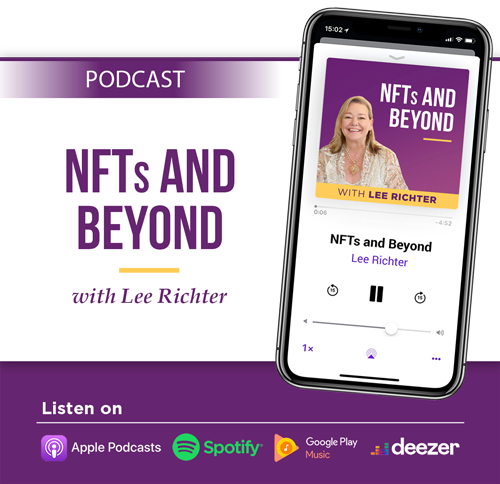Unlocking the Future of Banking: Now more than ever things are in flow, dynamic and we must learn how to adapt and keep pace. The world of banking and finance is no different and it’s experiencing a remarkable transformation, driven by emerging technologies and innovative solutions. As an industry professional deeply involved in this evolution, I was thrilled to be invited to James Robert Lay’s podcast: Banking on Digital Growth to talk about blockchain and how we are all in this together because, once technology advances, it never goes back.
It was a marvelous experience, and I am so grateful to have had the opportunity to share my view of the world with him and all his listeners. If you want to listen to our conversation, what are you waiting for?
Join us here!
But… if you are curious, but really, really can’t listen right now, here are the highlights:
Blockchain is for EVERYONE
One of the things I hear the most about when talking to older people is “Ugh, Blockchain. What even is this?”
And it always stuns me because so many people before said the same thing about cheques and then ATMs and then mobile banking. The thing is: blockchain is not less complicated for younger, GenZ people because they are better at understanding Blockchain. They learn as they run into things, just like older generations do. But this new generation that is now dominating the Blockchain space is doing so because they are not afraid. They jump in. No matter your age, Blockchain IS the future. And although you don’t have to get into it all at once, you do have to get into it. One step at a time is fine. But remember, once technology goes forward, it never goes back. When it went from horse and buggy to car, it didn’t go backward. So, take it slow, but take it.
What is Web3 (and why is it the future)
Web3 refers to the next generation of the internet, where decentralized technologies, particularly blockchain and cryptocurrency, play a central role. Unlike its predecessors, Web1 and Web2, which focused on one-way communication and centralized platforms, Web3 aims to empower individuals, promote transparency, and redefine ownership and control over digital assets.
Think back to Web1, the original World Wide Web. It was basically a platform that would have one-way dialogue. A website would connect with the audience. But it wasn’t connecting with the audience for two-way dialogue, it was connecting to deliver information and offers.
Web 2.0, exemplified by platforms like Facebook, introduced two-way communication but still maintained ownership of intellectual property (IP) by the platform owners. Gamers and online users recognized that their attention and IP held significant value in the digital realm which led to the birth of Web3.
In the world of Web3, a groundbreaking transformation is underway, unlocking the future of banking. This transformative power lies in users’ hands, granting them ownership and control over their data, content, and digital identities through secure blockchain technology. By removing intermediaries, Web3 empowers individuals, placing them at the forefront of their online experiences. This paradigm shift fosters peer-to-peer interactions, facilitates seamless engagement with decentralized applications (dApps), and enables the utilization of digital assets such as non-fungible tokens (NFTs) to authenticate, trade, and monetize exclusive digital content. Embracing Web3 opens doors to unparalleled possibilities, revolutionizing the way we bank and shaping a more empowering financial landscape.
Lessons for Web3 and the Creator Economy
In the realm of the creator economy, banks, credit unions, and FinTech companies can create value. Lessons from successful brands like Starbucks, Nike, Louis Vuitton, and Gucci reveal the power of Web3 and NFTs in rebuilding devoted fan communities. Web 3.0 launches showcase higher engagement levels, as demonstrated by Jeff McPherson’s recent launch where 89% of participants engaged in subsequent launches. This deep loyalty and excitement foster a strong sense of connection and support. Brands like Starbucks and Nike prioritize resonating values and shared experiences, cultivating highly engaged communities. Unlocking the future of banking, credit unions, and FinTech can leverage the creator economy’s potential to provide unique value to dedicated supporters.
To the Global Leaders Collective, Web3 is the future. If you think so, too, don’t forget to take a deep dive and listen to the entirety of my conversation with James Robert Lay here.







